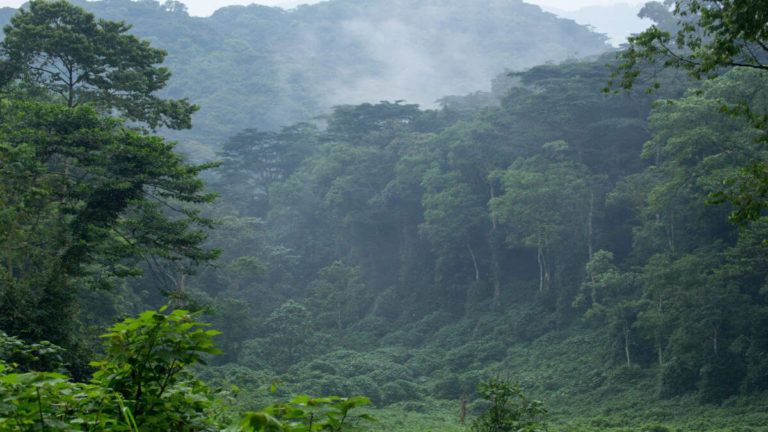About Bwindi Impenetrable Forest
About Bwindi Impenetrable Forest
The Bwindi Impenetrable Forest is a large primeval forest located in south-western Uganda in the Kanungu District. The Bwindi forest is on the edge of the Albertine Rift, the western branch of the East African Rift, at elevations ranging from 1,160 to 2,607 metres (3,806 to 8,553 ft). The forest contains around 160 species of trees and over 100 species of ferns.

The name Bwindi is derived from the Runyakitara word Mubwindi and means “a place full of darkness”. This name comes from the extensive stands of bamboo interspersed amongst the larger forest hardwoods. The bamboo and thick ground cover of ferns, vines, and other plant growth severely hinder direct access on foot. Also known as the “Place of Darkness” the forest is on the edge of the western arm of the Great Rift Valley, only a few kilometres from the Democratic Republic of the Congo (DRC) border and about 25 kilometres (16 mi) north of the Virunga Mountains.
The forest is one of the most biologically diverse areas on Earth. Half of the world’s population of the highly endangered mountain gorillas live within its borders. The forest has been recognised by the United Nations Educational, Scientific and Cultural Organization as a World Heritage Site for its biological significance. At present the forest is believed to contain 120 mammals species, 348 bird species, 220 butterfly species and 27 frog species. Included among the mammals are forest elephants and yellow-backed duikers. While mountain gorillas are the most notable of the forest’s primates, other residents include chimpanzees, blue monkeys, l’Hoest’s monkeys, red-tailed monkeys, vervet monkeys and black-and-white colobus monkeys. The forest’s birds include great blue turacos, black-billed turacos, black bee-eaters, African green broadbills, handsome francolins, African black ducks and Cassin’s grey flycatchers.